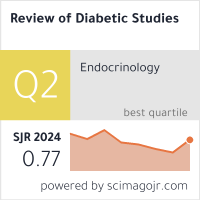Evaluation Of The Hepatic Steatosis Index As A Diagnostic Predictor Of Fatty Liver Disease Associated With Metabolic Dysfunction In Type 2 Diabetics
DOI:
https://doi.org/10.70082/ht75t975Abstract
The hepatic steatosis index (HSI) has demonstrated usefulness in detecting metabolic dysfunction-associated fatty liver disease (MAFLD). However, in middle-income countries such as Peru, its predictive capacity has not been validated, nor have optimal cutoff points been established. In this context, the present study evaluates the HSI as a diagnostic predictor of MAFLD in patients with type 2 diabetes mellitus attending a tertiary hospital in northern Peru. Materials and Methods: A prospective external validation study of the HSI model was conducted in 175 diabetic patients receiving outpatient care at the Hospital Regional de Chimbote, Peru, between November and December 2024. Based on the collected clinical and biochemical data, each patient’s HSI score was calculated using the original model equation. Subsequently, its predictive performance was evaluated through calibration, discrimination, and classification analyses. Results: A total of 74.2% of the selected patients were diagnosed with MAFLD. The HSI model showed good discriminative performance, with an AUC of 0.83 (95% CI: 0.77-0.89) and a calibration slope of 1. In our population, an HSI score <36 had a negative likelihood ratio of 0.26, ruling out MAFLD, whereas an HSI >44 yielded a positive likelihood ratio of 24.5, confirming the diagnosis. Conclusions: In the present study, the HSI index demonstrated adequate predictive performance for MAFLD. Owing to its ease of application and low cost, this model represents a potentially useful tool in middle- and low-income countries, as it contributes to the identification of type 2 diabetic patients who require diagnostic confirmation of MAFLD through liver ultrasound.
Downloads
Published
Issue
Section
License

This work is licensed under a Creative Commons Attribution-ShareAlike 4.0 International License.


